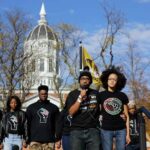By Alexandra Svokos
The Huffington Post, College, 1/12/15 — Diversity on college campuses has increased, but women and minorities still face prejudice and discrimination, a new study from the Harvard University Voices of Diversity project found.
This discrimination, often manifested in what are called “microaggressions,” creates unwelcoming environments and can be detrimental to academic performance, the study says.
“It’s clear that it doesn’t matter if it’s a public or private college, doesn’t matter how big the school is, doesn’t matter where it’s located geographically,” Paula Caplan, the study’s lead author, told The Huffington Post. “From a public university in the Deep South to an Ivy League university, we’re finding the same thing.”
The study’s researchers conducted interviews and surveys with students on four different campuses. Only one — Missouri State University — offered to be named. The others were referred to as Midwest University, South University and Ivy University.
Students at each school reported instances of discrimination, and the study includes a collection of these stories.
“Some white guy stepped on my foot … and yelled at me and told me to go back to my country. And then I was thinking, ‘Oh wait, this is my country, I was born here,'” Sang, an Asian-American senior, said in the report.
But most instances are less overt. These are microaggressions — subtle digs and biases — that permeate the culture. They could include something like a man rolling his eyes when a woman speaks, or people not wanting to be in study groups with those of different races.
Students said they also notice that white male students are called on in class more often than other students.
“I have to stop and think sometimes, ‘Are they being racist? Or, is that just how they act? Or, are they just not being friendly because they’re having a bad day?'” Raymond, an African-American respondent, said in the report.
Students often do not want to call people out for microaggressions for fear of losing friends or creating more hostile environments, the report says. Students also don’t always know which institutions at their schools they can report these instances to.
There have been many studies that show this type of everyday discrimination hinders academic performance.
“Can you imagine taking an exam when you’ve got all this turmoil inside?” Caplan said.
The study found that women and minorities are made to feel like they do not belong on the campus — for example, that they only got in thanks to affirmative action. Anthony, an African-American senior at the Ivy university, said he notices “a slight raising of the eyebrows, or eyes following you in the dining hall.”
This feeling of not belonging extends to the professors and syllabuses, students said.
“When you get into one of these high-status universities, and you’re a woman, you are made to feel so lucky to be there,” Caplan said. “But you look around, and guess what? A vast majority of the professors are still men. They’re still white men.”
There’s also a lack of diversity in course materials. Outside of classes about women or different cultures, you’d be hard-pressed to find course materials written by anyone other than white men, respondents in the study said.
“It’s not that there’s anything wrong with what white men say,” Caplan clarified, “but when there’s nothing on the syllabus by anybody who’s in the group you are in — either in race or sex — with that absence, you don’t have role models, you don’t have people who were treated in similar ways.”
The study offers a series of recommendations, including a mandatory class about the effects of discrimination and stereotyping in its most modern form. This way, non-minority students can increase their empathy and begin to understand their peers’ experience.
Missouri State University has already begun making changes in response to findings from the study. These included a focus on recruiting African-American and Hispanic faculty and staff members and establishing an Office for Diversity and Inclusion.
Because many students reported feeling discrimination off campus in the city of Springfield, MSU collaborated with the city’s Chamber of Commerce to sponsor “facing racism” training sessions for community leaders.
As conversations about racism came to the forefront in Missouri following the killing of Michael Brown, the campus had the infrastructure to address student concerns. Brown was a black 18-year-old shot by white cop Darren Wilson in Ferguson, Missouri — near the area many MSU students are from. The school was immediately able to “hold dialogue sessions, panel discussions, and student-led activities in which student leaders crafted goals for their own community,” the report says. Students met with the Springfield police chief, who then asked to be contacted personally if students felt racially profiled in the community.
“This is the kind of thing that makes you believe how much better things can get,” Caplan said.
www.huffingtonpost.com/2015/01/12/microaggressions-college-racism-sexism_n_6457106.html










